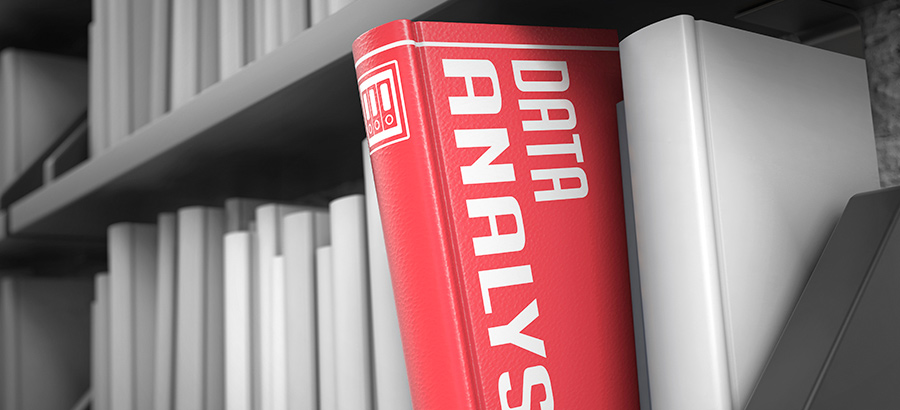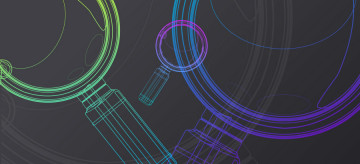- Advertising
- Bare Metal
- Bare Metal Cloud
- Benchmarks
- Big Data Benchmarks
- Big Data Experts Interviews
- Big Data Technologies
- Big Data Use Cases
- Big Data Week
- Cloud
- Data Lake as a Service
- Databases
- Dedicated Servers
- Disaster Recovery
- Features
- Fun
- GoTech World
- Hadoop
- Healthcare
- Industry Standards
- Insurance
- Linux
- News
- NoSQL
- Online Retail
- People of Bigstep
- Performance for Big Data Apps
- Press
- Press Corner
- Security
- Tech Trends
- Tutorial
- What is Big Data
5 of the Best Books to Put on Your Big Data Reading List for Summer 2016
Last year, readers thoroughly enjoyed our run-down of the top big data books for the year. As you prepare for summer vacation, you'll probably want to pack a bag with the best big data books, so that when you return you aren't just refreshed -- you're stocked up on the latest information on your career field and newly rejuvenated in your effort to leverage the latest technologies to push your business to new heights. Here are the top books to beef up on big data in 2016. Sorry -- sun, sand, and surf not included.

Last year, readers thoroughly enjoyed our run-down of the top big data books for the year. As you prepare for summer vacation, you’ll probably want to pack a bag with the best big data books, so that when you return you aren’t just refreshed—you’re stocked up on the latest information on your career field and newly rejuvenated in your effort to leverage the latest technologies to push your business to new heights. Here are the top books to beef up on big data in 2016. Sorry—sun, sand, and surf not included.
1. Big Data: Using SMART Big Data, Analytics and Metrics To Make Better Decisions and Improve Performance

This new work by Bernard Marr is an updated primer on the basics of big data. If you are new to the technology and want a more updated way to get your feet wet, this is your book. It was published in 2015, so it’s far more up-to-date than the older standbys. It covers how to get real-world use out of data and how to improve performance of a big data operation that’s already underway. This is a step-by-step approach, with practical, applicable info on the START model: strategy, metrics, applied analytics, reporting, and transformation.
2. Predictive Analytics: The Power to Predict Who Will Click, Buy, Lie, or Die
This book goes beyond the big data basics into predictive analytics, one of the most powerful uses of big data. Focused on the online marketing uses for big data, this book discusses how to predict actual consumer behavior, how to overcome the challenges, and how these techniques can be applied to specific industries, such as healthcare, manufacturing, etc. It also covers conquering spam, optimizing for social networks, applying analytics to fighting cyber crimes, and more.
3. Storm Applied
Moving past the basics, Storm is an Apache product that powers distributed real-time big data computations. This is a powerful tool for those serious about big data, and this book by Sean T. Allen, Peter Pathirana and Matthew Jankowski is a practical guide to getting started with Storm. Focusing on the real-world applications of Storm, the book lays a solid foundation of the principles of using Storm and then discusses how to build Storm solutions using established best practices.
4. Advanced Analytics with Spark
Apache Spark is growing in popularity, primarily because it’s a far easier option than using the old MapReduce. This speedy general data processing engine is capable of managing mongo data sets, and you can learn how to leverage it the right way in this book by Sandy Ryza, Uri Laserson, Sean Owen, Josh Wills. The book teaches analytical approaches to big data by example, including applications like making music recommendations based on user activities, detecting ananalogies, understanding Wikipedia, decision trees, analyzing co-occurrence networks with GraphX, estimating financial risks, and other practical, real-world situations.
5. Designing Data-Intensive Applications

Rounding out our list is a book on building applications that make the most out of your big data operations. This book by Martin Kleppmann explores how the top software developers and systems architects build applications that are highly scalable, reliable, and easy to maintain using principles, algorithms, and making smart trade-offs. It covers using all of the popular software and frameworks, giving real-world examples of how to do what they do. The book delves into choosing the right tools, as well as how to combine the tools to construct a smart foundation of application architecture. By the end of the book, you’ll not only have a 1, 2, 3-step process, you’ll have developed the intuition you need to build smarter applications to leverage that data, plus some handy problem-solving skills, too.
Hey, if you study up on work during that vacay, you might be able to make a case for deducting the trip on your taxes ... or not. Happy reading, anyway!
Readers also enjoyed:

5 Rules for Avoiding a Big Crash & Burn with Big Data


Leave a Reply
Your email address will not be published.